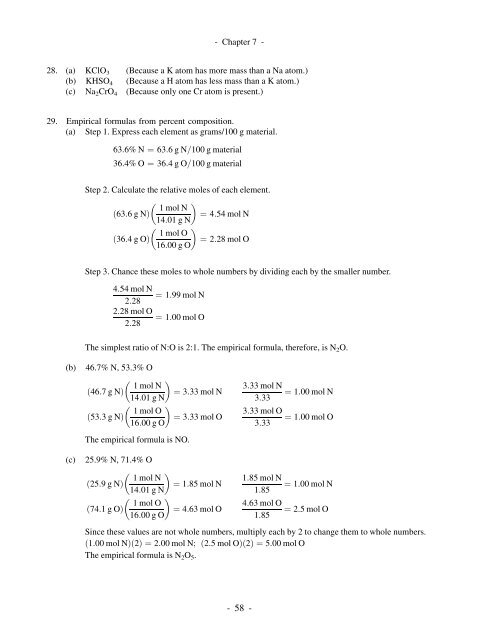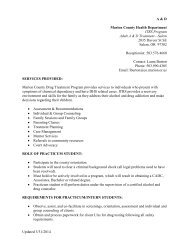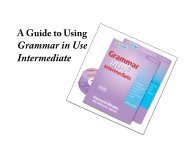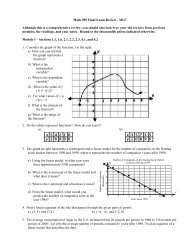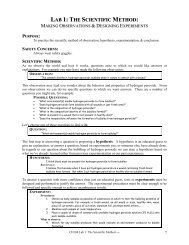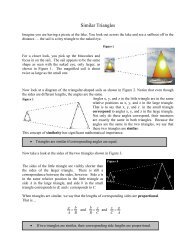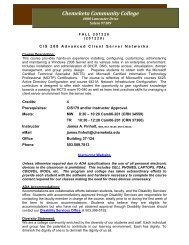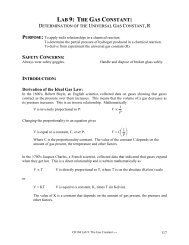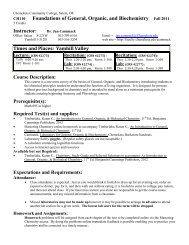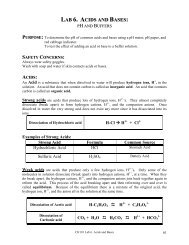Chapter 7
Chapter 7
Chapter 7
Create successful ePaper yourself
Turn your PDF publications into a flip-book with our unique Google optimized e-Paper software.
- <strong>Chapter</strong> 7 -28. (a) KClO 3 (Because a K atom has more mass than a Na atom.)(b) KHSO 4 (Because a H atom has less mass than a K atom.)(c) Na 2 CrO 4 (Because only one Cr atom is present.)29. Empirical formulas from percent composition.(a) Step 1. Express each element as grams/100 g material.63:6% N ¼ 63:6gN=100 g material36:4% O ¼ 36:4gO=100 g materialStep 2. Calculate the relative moles of each element. 1 mol Nð63:6gNÞ¼ 4:54 mol N14:01 g N 1 mol Oð36:4gOÞ¼ 2:28 mol O16:00 g OStep 3. Chance these moles to whole numbers by dividing each by the smaller number.4:54 mol N¼ 1:99 mol N2:282:28 mol O¼ 1:00 mol O2:28The simplest ratio of N:O is 2:1. The empirical formula, therefore, is N 2 O.(b)46.7% N, 53.3% O 1 mol Nð46:7gNÞ¼ 3:33 mol N14:01 g N 1 mol Oð53:3gNÞ¼ 3:33 mol O16:00 g OThe empirical formula is NO.3:33 mol N3:333:33 mol O3:33¼ 1:00 mol N¼ 1:00 mol O(c)25.9% N, 71.4% O 1 mol N1:85 mol Nð25:9gNÞ¼ 1:85 mol N¼ 1:00 mol N14:01 g N1:85 1 mol O4:63 mol Oð74:1gOÞ¼ 4:63 mol O¼ 2:5 mol O16:00 g O1:85Since these values are not whole numbers, multiply each by 2 to change them to whole numbers.ð1:00 mol NÞðÞ¼2:00 2 mol N; ð2:5 mol OÞðÞ¼5:00 2 mol OThe empirical formula is N 2 O 5 .-58-


